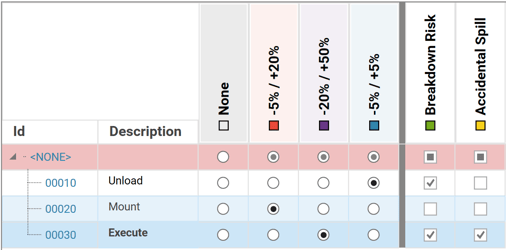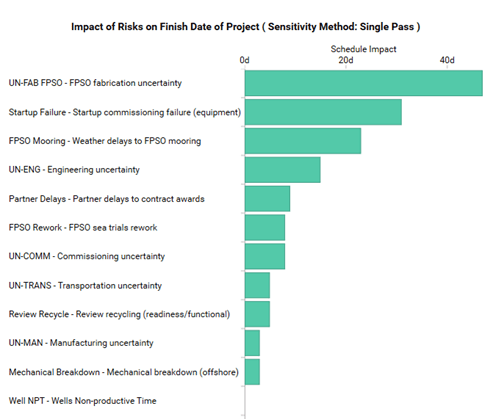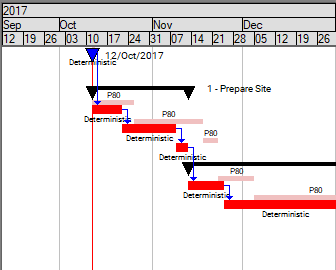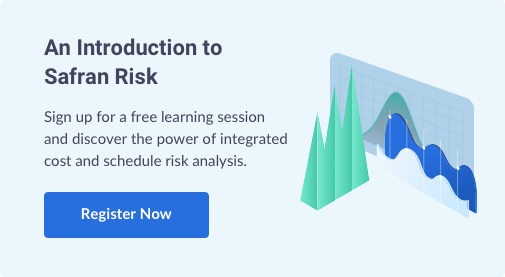Ezinwanyi Kesieme is Associate Risk Manager (Head of Quantitative Modelling) at multinational engineering firm, AECOM. Below she explores why AECOM has adopted the “Risk Driver Method” and “Sensitivity Analysis”. She explains how these modern and powerful risk analysis methods help AECOM to complete projects faster and with lower total project cost.
WHAT ARE THE MOST COMMON PROJECT SCHEDULING CHALLENGES?
Project managers frequently find themselves faced with two main challenges regarding scheduling.
The first is when completion dates are pre-agreed before the project has begun. In this scenario, the date settled on by the client may be unrealistic, particularly if based on overly optimistic data and assumptions. Targeting completion dates in this way fails to consider probable impediments and makes it challenging for project managers to create realistic delivery plans.
Secondly, there is the issue of activities within the project schedule having uncertain durations. Most projects have activities that run in parallel, before meeting at a specified merge point. If a Project Manager is unsure how long each of these parallel activities might take, merge points can’t be scheduled accurately. Overall project completion is strongly influenced by controlling these merge points.
To address these challenges, a “Schedule Risk Analysis” (SRA) must be carried out.
HOW CAN A SRA HELP?
A SRA considers the likely impacts of uncertainties and risks to the relevant activities on the schedule. The effect of uncertainty and risk on critical pathways will be dependent on available float. A SRA uses Monte Carlo analysis to calculate the completion date along a probabilistic continuum of possible outcomes (see Figure 1 below).
This approach improves understanding of schedule variables and drives a more realistic and optimised plan. Demonstrating this smarter planning approach enables AECOM to demonstrate to its clients that their projects are being delivered as quickly as possible, considering project risks and uncertainties.
Figure 1 shows the “P80” schedule alongside the “Deterministic”
WHY IS IT IMPORTANT TO UNDERSTAND THE WIDER CONTEXT OF RISK MANAGEMENT?
Every project faces uncertainty, so AECOM must help its clients to see the effect that decisions may have against various objectives and business priorities. Given it’s impossible to eliminate all uncertainty, risk management is about working smarter with uncertainty.
Unplanned issues naturally delay milestones and the overall completion date (project objectives). So, understanding risk-impacts and their relative probability of affecting achievement of those objectives helps teams apply appropriate resources on those risks that matter most.
This way, pre-emptive changes can be intelligently made, helping the project to stay on track. At AECOM, we believe that risk management isn’t just a tick-box exercise, it’s a way to deliver faster results, so our clients can start benefiting from their completed projects sooner.
WHAT IS THE "RISK DRIVER METHOD"?
Traditionally, an SRA applies a three-point estimate to activities to provide information about the probable project delay. However, this approach can’t shed light on the likely impact of an individual risk event. A different approach is needed to highlight this and other powerful insights.
When project risks are identified, a technique called ‘risk mapping’ is used to set out the impact of each risk on individual project activities (see Figure 2 below). With Safran Risk’s “Real Time Analyser”, it helps me sense-check that my “risk mapping” inputs are correct before I undertake a full analysis. It is much harder to spot input errors after a full analysis. A ‘tornado’ style report is used to show which are the prioritised risk drivers, in turn, guiding the project team on where to focus their efforts.
Figure 2 shows Risk Mapping
WHAT IS "SENSITIVITY ANALYSIS"?
Created by David Hulett, the “Sensitivity Analysis Method” is all about measuring how many days each risk will delay the project and using the output to discern which high-impact risks can cost-effectively be mitigated.
“Sensitivity analysis” involves removing each risk, one at a time, and re-running the simulation to see the relative effect each was having against the project deliverables. This painstaking process can take days with traditional tools, but Safran Risk can do it automatically within minutes.
“Sensitivity analysis” provides the data needed to intelligently assess whether the cost of any treatment strategy justifies the improvement gained. Without a data-backed strategy, project managers can spend a lot of money for very little reward, so “sensitivity analysis” is vital.
Figure 3 shows how many days each risk is likely to delay the project.
WHAT ARE THE BENEFITS OF THE "RISK DRIVER METHOD" AND “SENSITIVITY ANALYSIS”?
‘How do we get the results we’re looking for?’ is the question on the lips of every key stakeholder, and the “Risk Driver Method” and “Sensitivity Analysis” go some way to answering it. Realistically, it won’t be possible to complete every project on time and on budget. However, by intelligently anticipating what might impact delivery, AECOM is working hard to deliver more with less cost for its clients.
AECOM’s core values include “collaborate”, “anticipate” and “deliver” and, using Safran Risk, that is exactly what the ‘Risk Driver Method’ and “Sensitivity Analysis” enable us to do.
“One of the things that differentiates AECOM is that we apply our expert knowledge of quantitative and schedule risk analysis to manage project uncertainties and pre-empt things for our customers – we collaborate, anticipate and deliver.”
- Ezinwanyi Kesieme
To learn more about the ways in which risk management can improve project outcomes, watch videos of further experts presenting at the Safran Project-Risk Conference, here.
BIOGRAPHICAL NOTE:
Ezinwanyi is (Associate) Risk Manager (Head of Quantitative Modelling) at AECOM and has worked within a wide range of industries, from oil and gas to rail, road and tourism. She is passionate about creating a risk aware culture to derive optimum value from industry best practices in risk management. Furthermore, Ezinwanyi enjoys getting the best results for her clients, using the latest risk management tools and methods.






